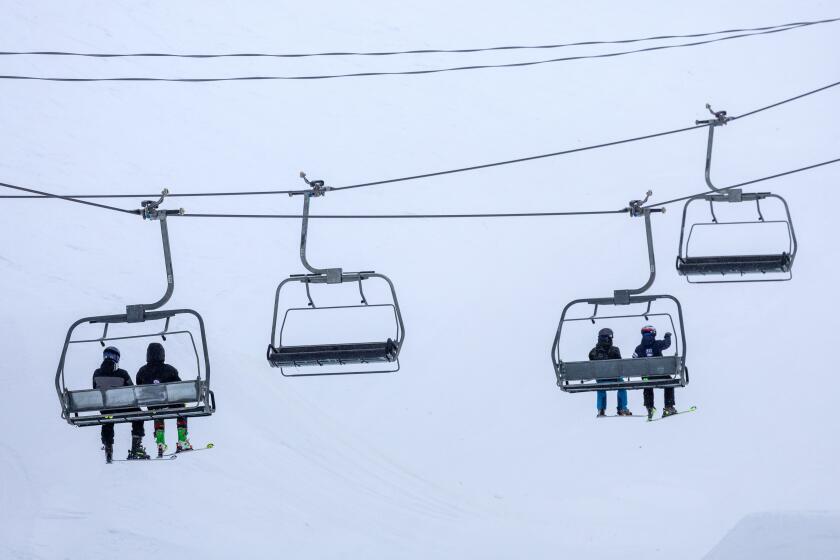Retracing John Muir’s footsteps
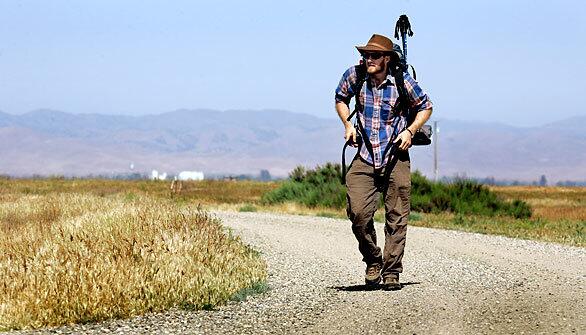
Alex McInturff, a 23-year-old Stanford University graduate student, is retracing conservationist John Muir’s 320-mile trek from San Francisco to Yosemite Valley in 1868. Here, McInturff hikes through Kesterson National Wildlife Refuge, part of the larger San Luis National Wildlife Refuge Complex in California’s Central Valley. (Al Seib / Los Angeles Times)
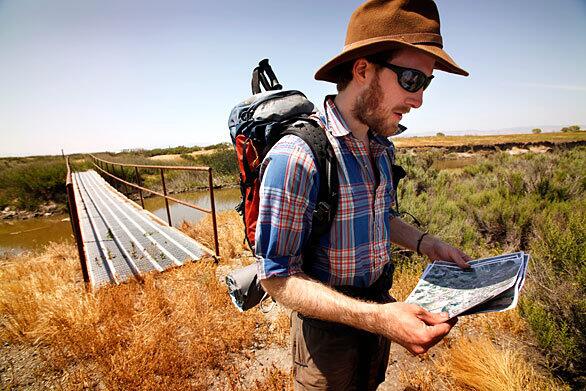
McInturff checks a map as he walks through Kesterson National Wildlife Refuge during his six-week journey. The 320-mile hike is believed to have been replicated only one other time before the earth sciences major strapped on his backpack in San Francisco and hit the road on foot. (Al Seib / Los Angeles Times)
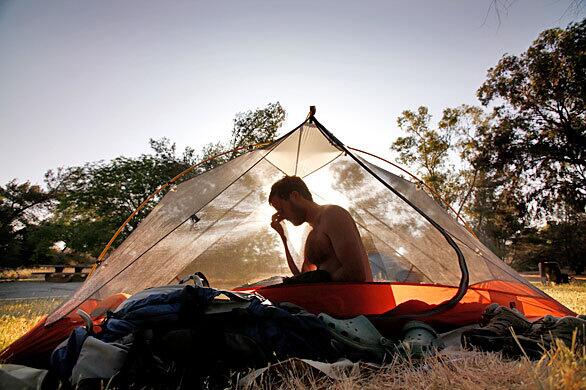
McInturff, wiping his eyes as he awakes in his tiny tent at San Luis Reservoir State Recreation Area, finds that legal campsites are few and far apart, and parks and preserves arent linked by trails. (Al Seib / Los Angeles Times)
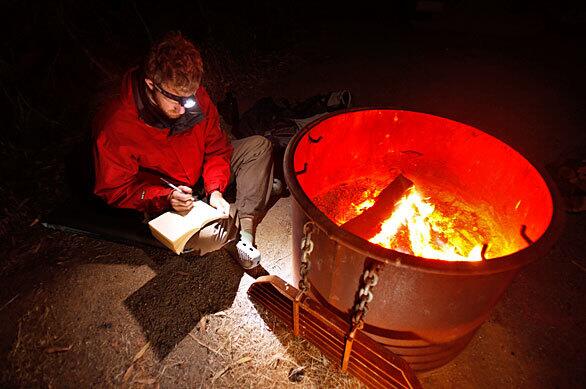
McInturff utilizes light from a battery-powered headlamp and the glow of a campfire to write in a journal after a day of hiking He says his goal is to see how California manages open space as he treks from its most picturesque city, San Francisco, to its most famous park, Yosemite. (Al Seib / Los Angeles Times)
Advertisement
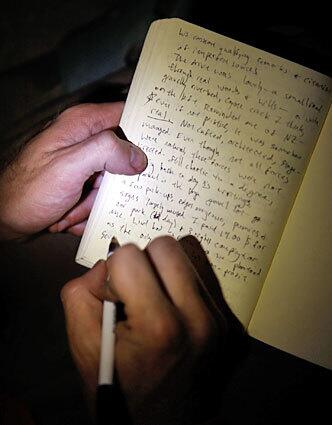
McInturff, writing in his journal, spent a year plotting his adventure the route that might approximate Muirs, the places to sleep, the people to interview about the California landscape, the occasional ride for a side trip and the libraries whose Internet access would allow him to post to his blog at www.muirwalk.blogspot.com. (Al Seib / Los Angeles Times)

McInturff tends to a blister on his foot as he rests at his campsite at San Luis Reservoir State Recreation Area. Other than a first-aid kit, he packed only one extra shirt, two pairs of socks and a rain shell. He borrowed a one-man tent from his dad and a backpack from a friend. (Al Seib / Los Angeles Times)
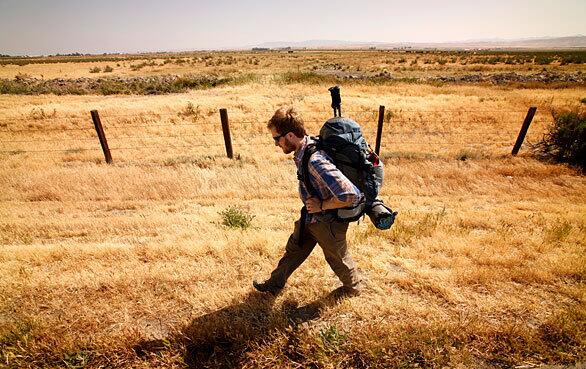
Near the end of the day, McInturff walks along Henry Miller Road outside the tiny town of Volta in California’s Central Valley. Some days, a planned 12-mile hike stretches into a weary,18-mile trek when lodging falls through. (Al Seib / Los Angeles Times)
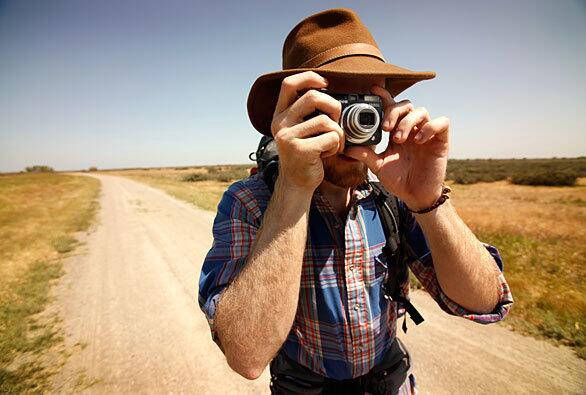
McInturff takes photographs as he walks through Kesterson National Wildlife Refuge, part of the larger San Luis National Wildlife Refuge Complex, where he forded streams, skirted curious cows and counted snowy egrets and wary coyotes, their ears pricked up at full attention. (Al Seib / Los Angeles Times)
Advertisement
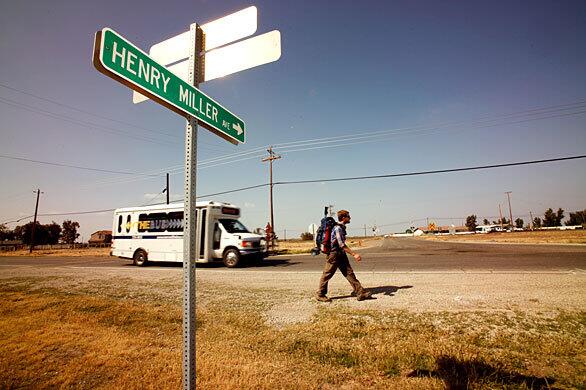
McInturff walks along the roadside in the tiny town of Volta in California’s Central Valley. Crossing the sere stretch from the Coast Range to the Sierra Nevada took its toll on him. The unchanging views and hazy skies all made for hard days and low spirits, he wrote in his online blog. (Al Seib / Los Angeles Times)
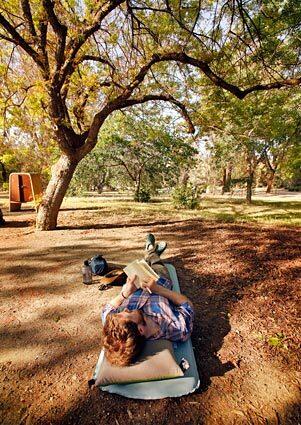
McInturff jots down notes in his journal as he rests under the shade of a tree at his campsite at San Luis Reservoir State Recreation Area. By the mid-point in his six-week journey, he says a few things had become abundantly clear: Much of Muirs garden of peerless grandeur has given way to vineyards, orchards and row crops. (Al Seib / Los Angeles Times)
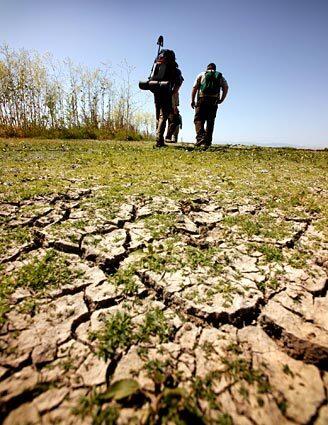
McInturff, left, walks with Dennis Woolington, a wildlife biologist with the U.S. Fish and Wildlife Service, across a lake that is drying intentionally at the San Luis National Wildlife Refuge to promote plant growth this time of year. (Al Seib / Los Angeles Times)
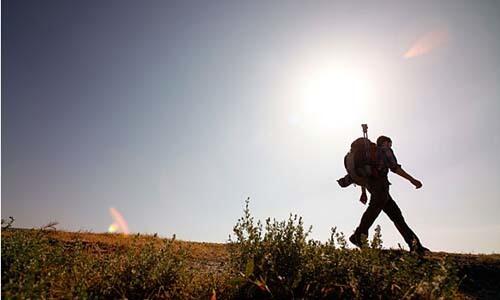
McInturff, walking through Central California, says his spirits began to lift once he hit the Sierra foothills. The mountain range that changed Muirs life 141 years ago hasnt lost its magic. Returning to the forest today, I rediscovered the freedom I love about walking, which was lost a little in the San Joaquin, McInturff wrote on his blog. (Al Seib / Los Angeles Times)


